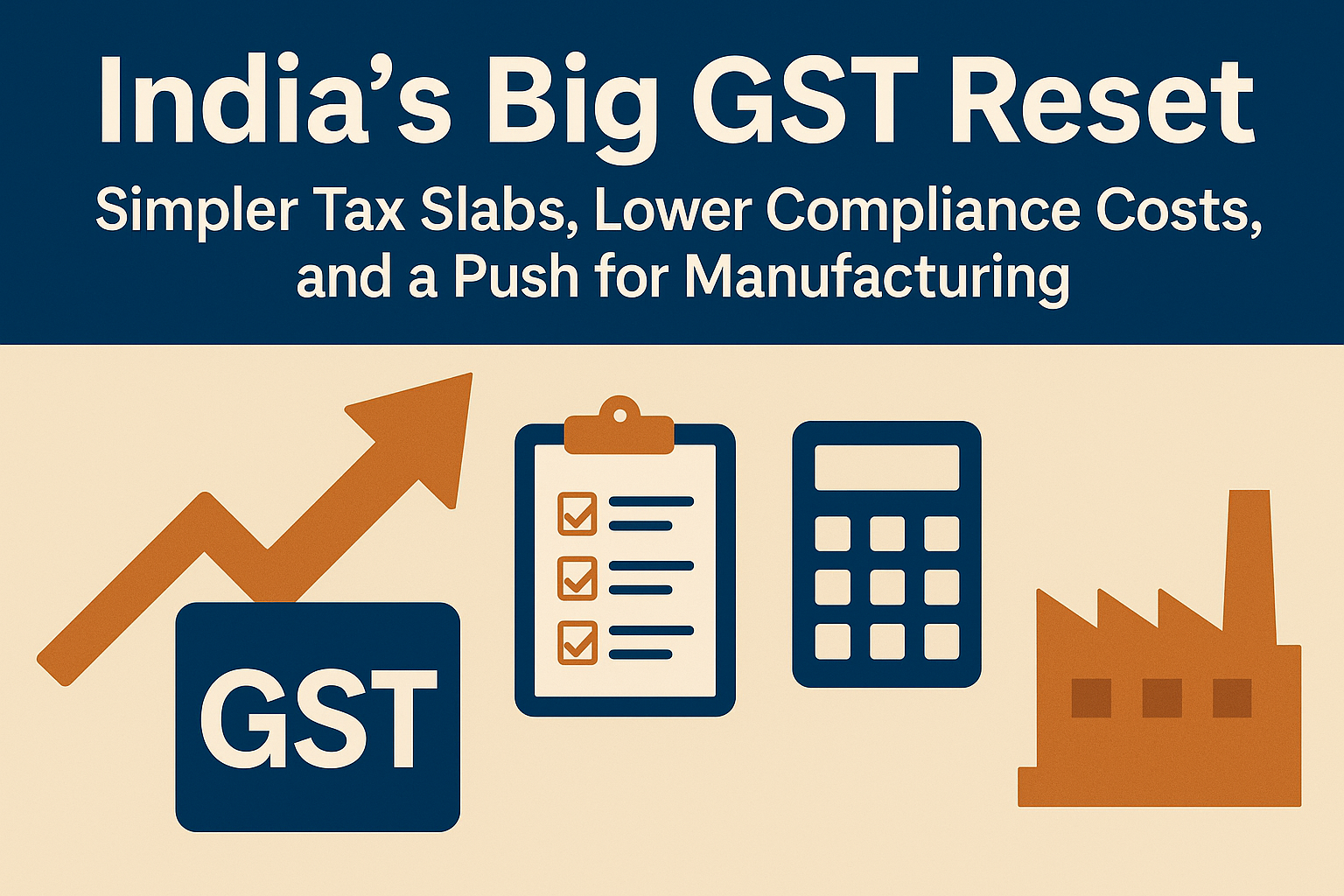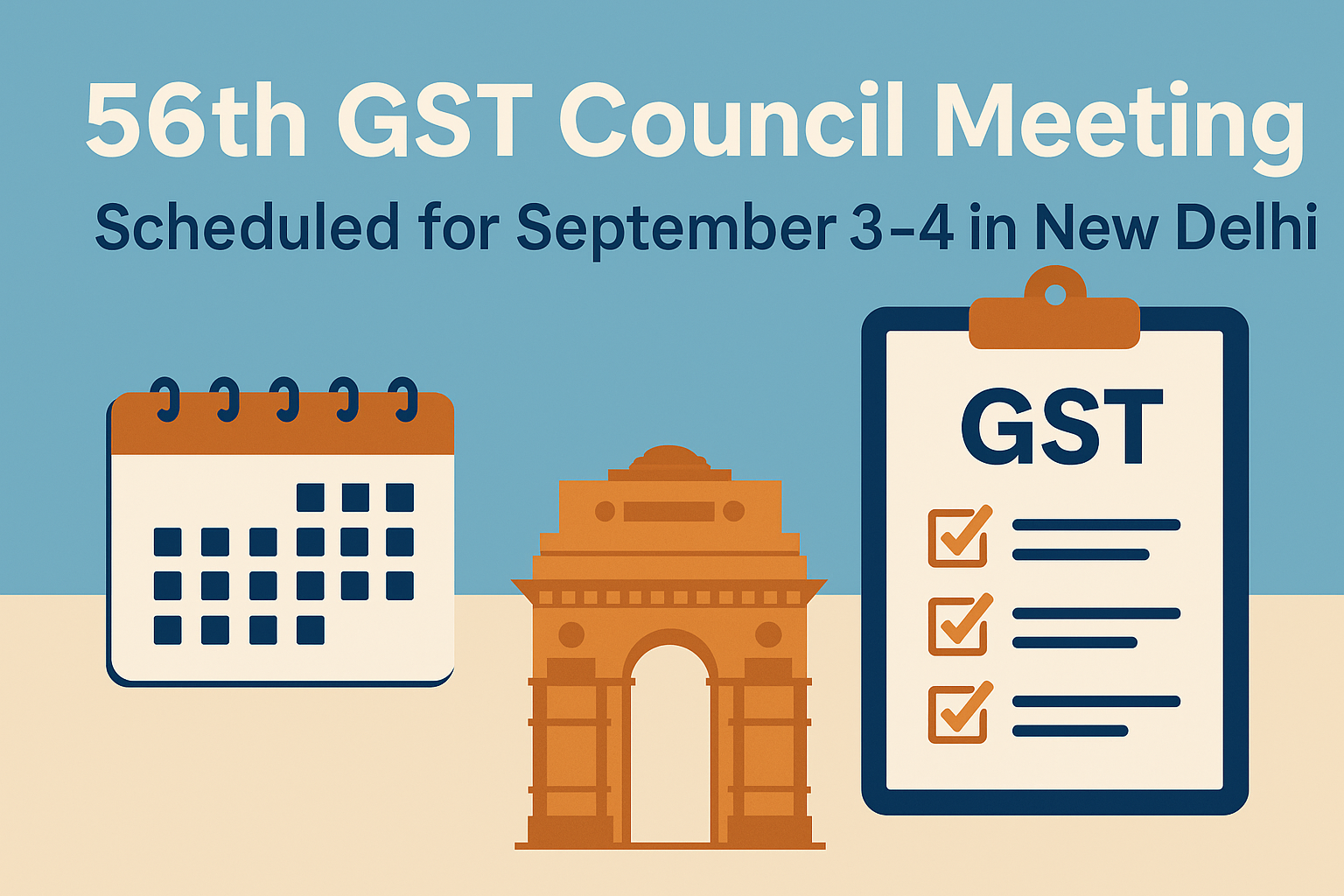India is preparing a major reset of its Goods and Services Tax (GST) to spur consumption and make local industry more competitive, even as global tariff tensions rise. In a recent public address, the prime minister highlighted the government’s intent to move toward a simpler GST structure, reduce compliance costs, and pair it with a broader “next-generation” reform agenda. The message was clear: a leaner tax regime could be the first step toward a new wave of growth.
What is changing
The government has proposed removing the current 28% peak slab, while merging the fragmented 12% and 18% rates into two streamlined categories: 5% and 18%. This simplification is expected to make many goods cheaper, boost consumption, and cut down on disputes over tax classification. The new GST design is positioned as a reform for everyday citizens, not just businesses. The festive season around Diwali has been identified as a likely milestone for rolling out these reforms.
Why it matters
Two key benefits stand out. First, households are expected to see lower prices on many goods, ranging from televisions to air conditioners items that have shifted from being seen as luxuries to everyday necessities. Second, the simplified structure gives Indian manufacturers an edge in global competitiveness. With labor costs already low and technology adoption increasing, the addition of a rationalized GST system makes production in India more viable for domestic and international markets.
Equally important is the government’s emphasis on cutting “compliance costs.” These are the hidden burdens of taxation: filing forms, paying penalties, registering under multiple rules, and spending valuable time navigating bureaucracy. The upcoming GST reset, along with future income-tax reforms, aims to reduce this drag and create a more business-friendly environment.
When is it happening
The reform momentum is tied to the “Amrit Kaal” vision for India’s centenary of independence in 2047. The prime minister has promised weekly tracking of progress to ensure that reforms do not stall. While the timeline may be influenced by global tariff developments later in the year, the domestic commitment to GST rationalization has already been signaled.
Where the impact will be felt
- Households: Lower costs on consumer goods will directly improve living standards.
- Small Businesses: Raising the exemption threshold (to ₹50 lakh) could prevent harassment of micro-enterprises and reduce the flood of notices faced by small traders.
- Manufacturing: Stronger local demand creates scale, which allows producers to compete globally. Unlike smaller economies that rely only on exports, India can leverage its large domestic market.
- Public Services: Tax reforms are linked to improved infrastructure funding, with Indian Railways’ modernization being showcased as an example of how reforms can translate into visible upgrades.
Who is driving it
The reform drive is led from the top, with committees under senior officials tasked with cutting through long-standing bottlenecks in state-level and bureaucratic approvals. The agenda is not just about GST rates but also about fixing structural issues such as land conversion, power and water connections, and environmental approvals. These factors often delay investment and hold back industrial growth.
How it will work
- Simpler GST rates: Consolidating into 5% and 18% slabs eliminates confusion, reduces disputes, and encourages consumption.
- Lower compliance burden: Streamlined registration, easier filing, and lighter penalties aim to cut down the “time tax” that especially hurts small firms.
- State-level reforms: Fast-track clearances for industry, along with predictable policies, are critical to sustaining high growth.
- Service delivery upgrades: Infrastructure projects, especially in transport and urban development, will show citizens the everyday benefits of reform.
Looking back, moving forward
The move recalls the days when automobile taxes were as high as 100%, making many goods unaffordable. Over time, items like air conditioners have shifted from luxuries to necessities. The simplification of GST acknowledges this societal change while also preparing for India’s economic future. The reforms are being likened to earlier paradigm shifts, such as the 1991 liberalization that dismantled a state-dominated model and opened the economy to private growth.
The global backdrop
This domestic reset comes as many countries consider new tariffs, some as high as 25–50%. While exporters and traders abroad may temporarily absorb some of the cost, full implementation could spark global inflation. India’s answer, rather than relying on external protection, is to strengthen its own competitiveness through internal reforms. This way, the economy can remain resilient regardless of international headwinds.



